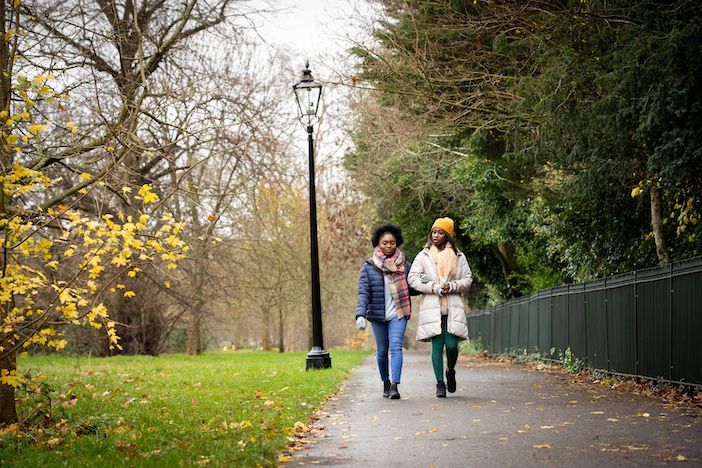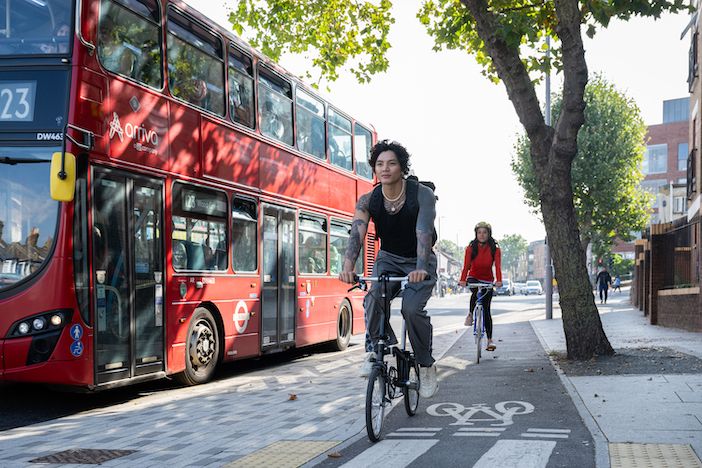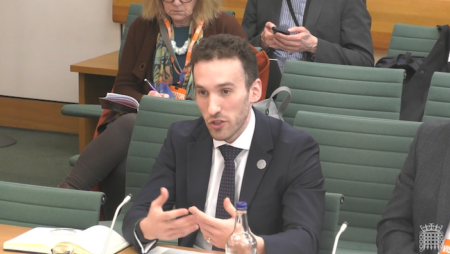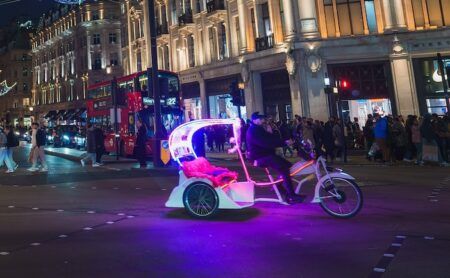Transport for London (TfL) has published new data from its Travel in London 2023 Annual Overview which shows that there have been continued increases in the levels of walking and cycling in London.
TfL points to investment in high-quality infrastructure that allows more people to walk and cycle more often as one of the reasons for this trend.
The new data shows that the number of daily cycle journeys increased in 2023 to hit an estimated 1.26 million journeys per day, up by 6.3 per cent from 1.19 million in 2022, and up by 20% since 2019. This represents a level of growth not seen in the years leading up to the pandemic and suggests that Londoners are continuing to make the most of cycling as a sustainable and affordable way of travelling around the capital.
While central London has seen a smaller level of growth (1.7%) reflecting hybrid working and less commuter cycling, both inner and outer London have seen strong increases of 8.2% and 5.5% respectively compared to 2022 levels. Separate data from the report shows that in the financial year 2022/23, the percentage of all journeys made by cycling reached 4.5%, a significant increase compared to the pre-pandemic level of 3.6% in 2019/20.

Walking also continues to be central to how many people travel in London, with levels increasing in 2022/23. New data from the Travel in London report shows that walking accounts for 39% of all trips by London residents. Overall trip rates have increased from 0.66 trips per person per day on average in 2017/18 to 0.80 in 2019/20 and 0.84 in 2022/23. [5]
The new statistics show the benefits of investing in high-quality walking and cycling infrastructure, with the cycle network now at 352km, up from 90km in 2016. TfL will continue working closely with London’s boroughs to deliver even more walking and cycling infrastructure in the coming years.
“I’m delighted to see the increase in cycling and walking journeys in London continue for yet another year,” says London’s walking and cycling commissioner, Will Norman. “The Mayor and I are committed to boosting this further. We will continue to expand the network of cycleways and make more junctions and crossings safer. We’re determined to build a cleaner, greener and more prosperous London for everyone, and investing in sustainable transport options is a vital part of that.”
Mariam Draaijer, chief executive of JoyRiders, adds: “At JoyRiders, our aim is to get women, especially from ethnic minorities and deprived communities, to take up cycling. In recent years we have seen an increase in women cycling and this uptake is stronger in areas with more cycling infrastructure such as areas in Waltham Forest or Hackney. Women should feel safe when cycling and are more likely to do so if they have good infrastructure or can avoid busier main roads.
“Having safe and high-quality infrastructure makes it more likely that women can confidently cycle on London roads seeing it as a real alternative to other transport methods such as cars or public transport. With more infrastructure to come and the support of community groups such as JoyRiders that help women and other Londoners to start riding a bike, cycling is becoming the transport of choice as it’s not just affordable, but also great for physical and mental wellbeing.”





